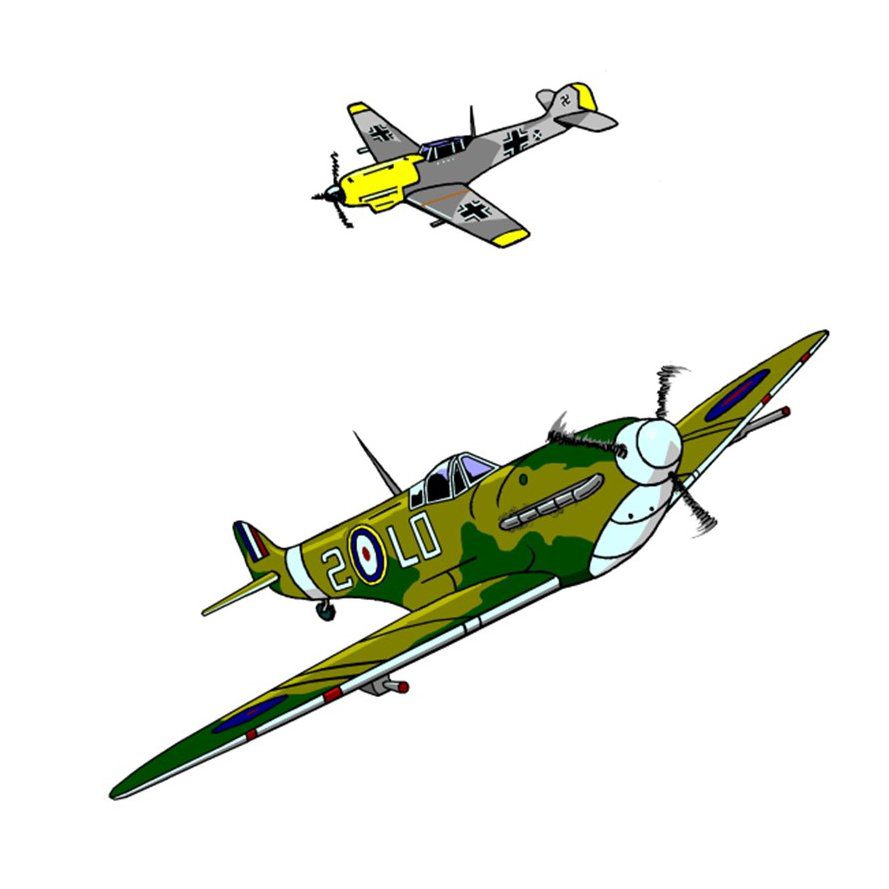
Did you know that ordinary men and women across the country played vital role in winning this battle?
They were Air Raid Wardens, firefighters and even those in the Home Guard.
However, don’t forget those many people, who between June and October 1940, built around 2,000 Hurricanes and Spitfires. For example, even at the height of the battle the RAF only had 749 fighters available while the Germans had 2,550 aircraft.
Those working in factories were as vital as those on the front line, as without a continual supply of aircraft replacing those shot down, we would have lost!
Early Warning Systems
 By 1940 all along the UK coast were a series of radar stations, called ‘Chain Home’. It was the first early warning radar system ever built. Those in the radar stations detected approaching German aircraft from up to 80 miles away.
By 1940 all along the UK coast were a series of radar stations, called ‘Chain Home’. It was the first early warning radar system ever built. Those in the radar stations detected approaching German aircraft from up to 80 miles away.
To win speed was crucial. It was the information provided by Radar along with the Observer Corps that gave RAF Fighter Command the time to contact the groups, who were able to get the aircraft in the sky, and warn the anti-aircraft guns, searchlights, and barrage balloons to prepare for the attack.
Using the latest science and technology to detect hostile aircraft and coordinate how our air defences responded was crucial and led to our victory in the Battle of Britain.
This was known as the ‘Dowding System’, it was at the time the world’s most advanced air defence network.
At the height of the Battle of Britain, the RAF had only 749 fighter aircraft available, against 2,550 Luftwaffe aircraft.
Facing unsustainable losses, the Luftwaffe abandoned its attempt to establish air superiority over the United Kingdom. It was the first major military defeat of Nazi Germany.
How much time did the RAF high Command to react to an attack
 Time taken for Luftwaffe aircraft to reach once detected was 20 MINUTES
Time taken for Luftwaffe aircraft to reach once detected was 20 MINUTES
Time taken to scramble RAF fighters to successfully intercept a raid 16 MINUTES
Time the RAF had to decide how to respond to a Luftwaffe raid 4 minutes!!
This meant that the pilots could only get into battle due to efforts and devotion of the ground crew of engineers, mechanics, and armourers, along with all those others who worked day and night on the stations to keep the pilots and their aircraft ready for battle. They did this while under constant fire as the RAF stations were the main targets of the Luftwaffe, as they were attempting to take the RAF out of the battle.
Our sister site Educationalmusicals.co.uk has published a musical Battle of Britain – A Story of the Few which tells the storyof two young school children listening to their grandfather who tells a story of four young people who join the RAF.
Isn’t history interesting?
10 questions to discuss:
- What roles did ordinary men and women play in the Battle of Britain?
- How many Hurricanes and Spitfires were built between June and October 1940?
- What was the significance of the ‘Chain Home’ radar system?
- How did radar stations and the Observer Corps contribute to RAF Fighter Command’s efforts?
- What was the ‘Dowding System’ and why was it important?
- How many fighter aircraft did the RAF have available at the height of the Battle of Britain?
- What led to the Luftwaffe abandoning its attempt to establish air superiority over the UK?
- How much time did the RAF high command have to react to an attack?
- What was the average time for Luftwaffe aircraft to reach once detected?
- What challenges did the ground crew face in keeping the pilots and aircraft ready for battle?
For more on this
© Tony Dalton

